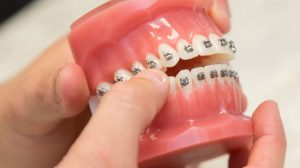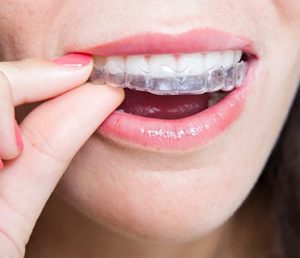What is Orthodontics and What Does an Orthodontist Do?
2018-04-16
Today there is a wide range of dental specialties that must be considered by patients in order to achieve the best possible results when it  comes to quality dental care. For example, orthodontics is a type of dental specialty that focuses on the prevention, diagnosis and treatment of dental as well as facial imperfections and irregularities. When orthodontic treatment is necessary a family dentist will usually refer a patient to an orthodontist. Keep in mind that an orthodontist is a dentist who studies for 2 to 3 additional years in the science of orthodontics. A wide range of subjects are studied during this time including how to effectively reposition and move teeth to ensure better and more proper alignment [1]. Most importantly, orthodontics focuses on doing what is necessary to promote the healthy development and growth of the jaw. This helps to facilitate a more natural facial development as well.
comes to quality dental care. For example, orthodontics is a type of dental specialty that focuses on the prevention, diagnosis and treatment of dental as well as facial imperfections and irregularities. When orthodontic treatment is necessary a family dentist will usually refer a patient to an orthodontist. Keep in mind that an orthodontist is a dentist who studies for 2 to 3 additional years in the science of orthodontics. A wide range of subjects are studied during this time including how to effectively reposition and move teeth to ensure better and more proper alignment [1]. Most importantly, orthodontics focuses on doing what is necessary to promote the healthy development and growth of the jaw. This helps to facilitate a more natural facial development as well.
 Problems Related To Jaw Growth
Problems Related To Jaw Growth
Orthodontic problems can arise in a number of ways. Misalignments from a dental perspective are often referred to as malocclusions. A malocclusion can be a natural deformity that is congenital in nature and results from inherited genes. This can cause problems related to normal jaw growth. Also frequently seen when it comes to congenital dental issues are missing teeth, extra teeth and teeth that have become protruded or crowded in some way. The spacing of teeth can be a major issue for individuals who have less than perfect teeth or jaw development. Even dental diseases can cause problems that require the care and treatment of an orthodontic professional.
Maintain Good Oral Hygiene
Most importantly, malocclusions along with looking unattractive can also cause functionality related problems. For example, a malocclusion can result in difficulties when it comes to speaking, chewing and even sleeping. A malocclusion can also result in tooth enamel wearing away over time and may even place excessive stress on gum tissue and the jawbone. It is also important to note that teeth that are misaligned, overlapping or crooked in some way can make it far more difficult to maintain good oral hygiene. This can easily result in gum disease and tooth decay. All said, having properly aligned teeth results in better dental health overall [2].
Brushing Teeth After Every Meal
Some useful tips when it comes to oral hygiene and orthodontic care include taking the time to practice good oral hygiene. Remember that bacteria found in food can produce plaque and tartar that can easily accumulate around teeth or braces [3]. Proper brushing and flossing even when dealing with braces can ensure the best in oral hygiene and health. Always plan to visit your family dentist at least once a year and preferably twice a year. Brushing teeth after every meal and before bedtime as well as flossing regularly can help to protect teeth and keep them healthy, strong and attractive. Contact your Walnut Creek dentist, Dr. Darvishzadeh at Walnut Creek Dental to learn more about keeping your teeth looking their best year after year.
References: [1] What are the Advantages of Invisalign? [2] Orthodontic Treatment Phases [3] Invisalign vs Braces, What You Need to Know
Subscribe To Our Newsletter
Get Updates And Learn From The Best